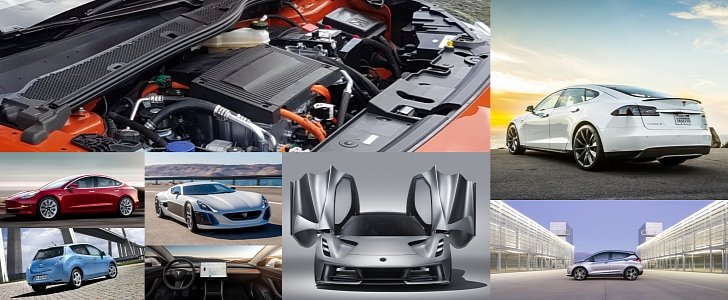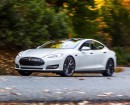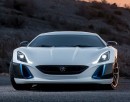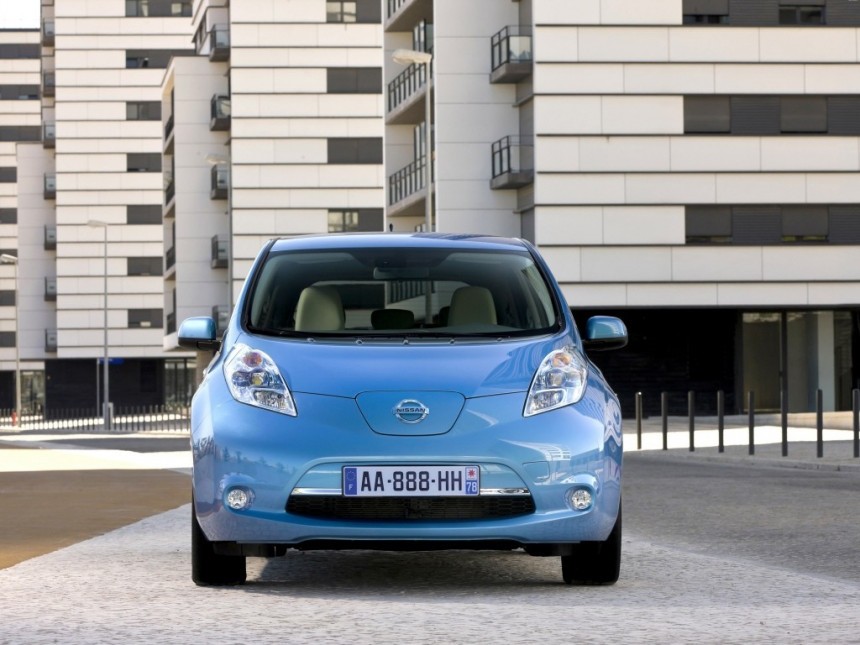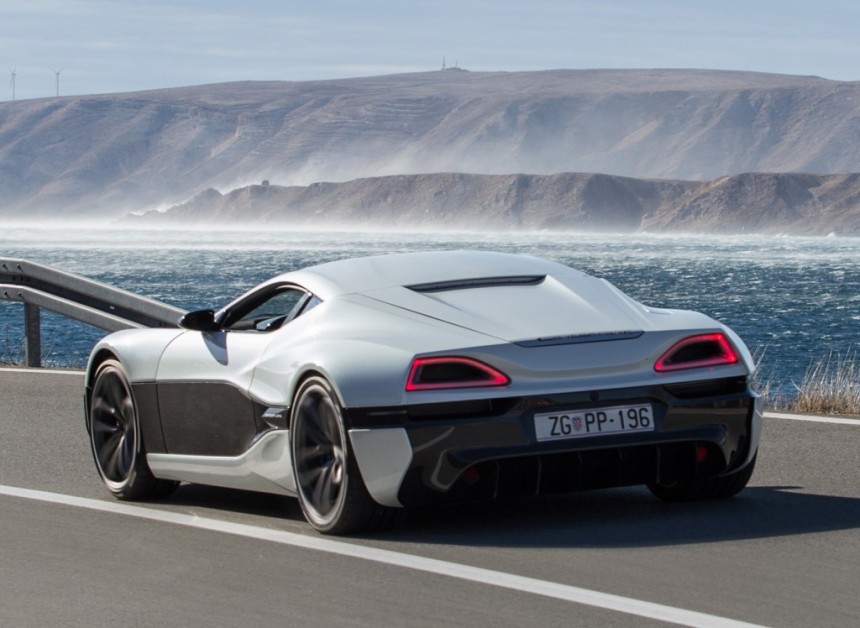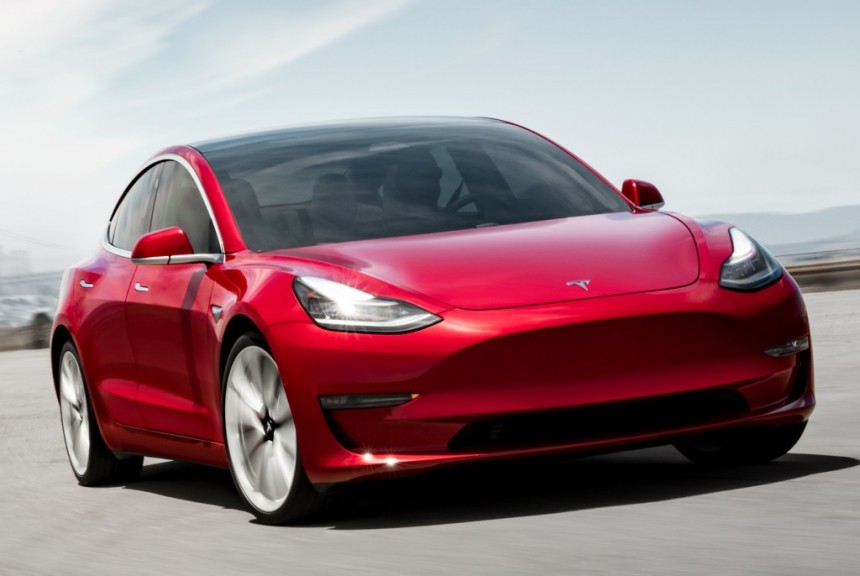The history of the EV likely starts in 1828 with a Hungarian priest who invented an electric motor for a model car. Then the first electric locomotive followed suit in 1837, along with a crude electric carriage by the end of the decade. Pretty boring stuff, don’t you think?
The paradox is, EVs are cooler than ever before despite their humble beginnings, and their popularity keeps growing all around the world.
Even though the Lunar Roving Vehicle deployed during the Apollo 15 mission had two batteries, four motors, and quirky styling for that era, the public and automakers still weren’t thinking about EVs entering the mainstream. The 1973 oil crisis raised a few eyebrows, but the electric vehicle as we know it today still wasn’t anywhere to be found because technology back then was a bit lacking.
General Motors was a trailblazer in BEV development back in the 1990s, experimenting with the EV1. The first mass-produced electric vehicle from our time predates the Toyota Prius by one year, but General Motors wouldn’t return to the segment until the Spark EV entered the scene in the last months of 2013.
By this time, Nissan was at the forefront of EV sales with the Leaf, although Detroit had experimented more than the Japanese in the ‘90s and ‘00s. Ford and The Big G even had electric pickups, namely the Ranger EV and Chevy S-10 Electric.
“But wait, didn’t you forget about the Mitsubishi i-MiEV and its French siblings from Peugeot and Citroen?” They came out a year before the Leaf, but poor marketing and an ever poorer range didn’t help at all. Nissan had the upper hand with the marketing and specifications of the Leaf, but still, the world’s best-selling electric vehicle wasn’t exactly cool because of its bug-eye headlight design.
“What about the Tesla Roadster?" The Californian automaker did hit it big with the Lotus Elise-based sports car, that’s for sure! On the other hand, the prohibitive price tag and limited production didn’t render the Roadster a mass-market triumph.
By all accounts, it’s the Model S that intertwined the mainstream and the cool factor into a cohesive package. The first example of the breed rolled out in 2012, and Tesla was even thinking about developing a range-extended version with a gasoline engine. Chief exec Elon Musk dropped those plans in favor of all-electric powertrains, and thus, a debt-ridden company has set the stage for more EVs.
Initial models had 60 kWh and rear-wheel drive, then came Performance models with neck-snapping acceleration. Two years after the Model S started production at the Fremont plant, Tesla made the bold move to add another electric motor to improve pretty much everything. This type of continuous development is something that Nissan can’t match, nor other competitors from far more luxurious brands.
The Tesla badge also has a sort of halo effect on everyone, and the Model S has always been regarded as a luxurious sedan with high-tech features such as autonomous driving, smart summon, big infotainment, the whole nine yards. What’s even better for the Palo Alto-based company is that the Model 3 has made Tesla ownership a dream come true for those who didn’t have the budget for a Model S a few years ago. Oh, and let’s not forget about the all-new Model Y…
Audi, BMW, and Mercedes-Benz have all tried to snatch a piece of the market with the e-tron, i3, and EQC yet none have Tesla’s impact. Simply put, people perceive an electric vehicle from Tesla as far superior to the German upstarts. Jaguar, on the other hand, has a pretty cool electric SUV in the guise of the beautiful I-Pace.
Another trend we should definitely cover is the advent of the electric hypercar. The Lotus Evija, Aspark Owl, and NIO EP9 are only three examples, and who could forget that Richard Hammond crashed a Rimac on The Grand Tour? This gets us to the world of motorized sports, which is more focused than ever on being ECO.
Volkswagen has broken records with the ID. R time and again, touring car racing has recently welcomed the Romeo Ferraris Alfa Romeo Giulia ETCR, and there’s also the growing popularity of Formula E. The WRC may be going hybrid in 2022, but Opel already offers an electric rally car for one-make series such as the ADAC Opel e-Rally Cup. Jaguar has one of those as well for the blacktop instead of the gravel, the I-Pace eTrophy that serves as the support series for the Formula E championship.
When all is said and done, looking at the bigger picture gets us to only one possible answer. It’s Tesla who did the most to bring EVs into the mainstream, cool cars and SUVs that everyone wants in their dream garage next to exotica such as Ferrari or more down-to-earth options like the Mazda MX-5 and the lil’ Suzuki Jimny.
Tesla has also proven that fast-charging infrastructure plays a big role in the mass-market appeal of an electric vehicle, and the Supercharger network is undoubtedly miles ahead of the competition. Other automakers – including the likes of Porsche – are trying to duplicate the formula with fast-charging stations of their own.
Speaking of the Prancing Horse of Stuttgart, care to guess how the Germans are marketing the Taycan? “It is characterized by the features that have always been decisive for any Porsche: pure emotion and maximum driving pleasure.” In other words, buy the Taycan because it’s very cool and it drives like nothing else.
“Buzzing Electric” is how we’ve titled this chapter of our Ten Years in Ten Stories series because the 2010s have seen the EV rise from zero to hero. The buzz is still there - buzzing stronger than ever - and there’s a lot to expect throughout the 2020s.
Some people are trying to make hydrogen an alternative to the BEV, but fuel-cell technology still has a long way to go until it becomes a feasible alternative. The electric vehicle, however, can be improved starting with battery technology.
Li-Ion batteries have led the EV offensive since the late 2000s thanks to high energy density, but solid-state batteries promise so much more. Replacing the liquid or polymer electrolyte with a solid electrolyte enables more energy density as well as durability, but many people don’t believe that solid is the way forward.
Moving the subject over to smartphones, Samsung hopes to use graphene batteries by 2021 in top-of-the-line devices. Capable of charging up to five times quicker than lithium-ion batteries, graphene has advantages that include less weight and less degradation over time. But just like solid-state batteries, this technology is too new and too hard to make commercially viable in EVs. For the time being, that is…
To wrap things up, battery-electric vehicles have evolved in a single decade more than ever before thanks to a multitude of factors that helped the automotive industry get outside of its comfort zone. The billions of dollars invested in electric vehicles have also put a lot of pressure on automakers which had never imagined that they would venture into this domain, but the inevitable had to happen nevertheless.
On that note, what are your biggest BEV hopes and fears for the 2020s?
Even though the Lunar Roving Vehicle deployed during the Apollo 15 mission had two batteries, four motors, and quirky styling for that era, the public and automakers still weren’t thinking about EVs entering the mainstream. The 1973 oil crisis raised a few eyebrows, but the electric vehicle as we know it today still wasn’t anywhere to be found because technology back then was a bit lacking.
General Motors was a trailblazer in BEV development back in the 1990s, experimenting with the EV1. The first mass-produced electric vehicle from our time predates the Toyota Prius by one year, but General Motors wouldn’t return to the segment until the Spark EV entered the scene in the last months of 2013.
By this time, Nissan was at the forefront of EV sales with the Leaf, although Detroit had experimented more than the Japanese in the ‘90s and ‘00s. Ford and The Big G even had electric pickups, namely the Ranger EV and Chevy S-10 Electric.
“But wait, didn’t you forget about the Mitsubishi i-MiEV and its French siblings from Peugeot and Citroen?” They came out a year before the Leaf, but poor marketing and an ever poorer range didn’t help at all. Nissan had the upper hand with the marketing and specifications of the Leaf, but still, the world’s best-selling electric vehicle wasn’t exactly cool because of its bug-eye headlight design.
By all accounts, it’s the Model S that intertwined the mainstream and the cool factor into a cohesive package. The first example of the breed rolled out in 2012, and Tesla was even thinking about developing a range-extended version with a gasoline engine. Chief exec Elon Musk dropped those plans in favor of all-electric powertrains, and thus, a debt-ridden company has set the stage for more EVs.
Initial models had 60 kWh and rear-wheel drive, then came Performance models with neck-snapping acceleration. Two years after the Model S started production at the Fremont plant, Tesla made the bold move to add another electric motor to improve pretty much everything. This type of continuous development is something that Nissan can’t match, nor other competitors from far more luxurious brands.
The Tesla badge also has a sort of halo effect on everyone, and the Model S has always been regarded as a luxurious sedan with high-tech features such as autonomous driving, smart summon, big infotainment, the whole nine yards. What’s even better for the Palo Alto-based company is that the Model 3 has made Tesla ownership a dream come true for those who didn’t have the budget for a Model S a few years ago. Oh, and let’s not forget about the all-new Model Y…
Audi, BMW, and Mercedes-Benz have all tried to snatch a piece of the market with the e-tron, i3, and EQC yet none have Tesla’s impact. Simply put, people perceive an electric vehicle from Tesla as far superior to the German upstarts. Jaguar, on the other hand, has a pretty cool electric SUV in the guise of the beautiful I-Pace.
Volkswagen has broken records with the ID. R time and again, touring car racing has recently welcomed the Romeo Ferraris Alfa Romeo Giulia ETCR, and there’s also the growing popularity of Formula E. The WRC may be going hybrid in 2022, but Opel already offers an electric rally car for one-make series such as the ADAC Opel e-Rally Cup. Jaguar has one of those as well for the blacktop instead of the gravel, the I-Pace eTrophy that serves as the support series for the Formula E championship.
When all is said and done, looking at the bigger picture gets us to only one possible answer. It’s Tesla who did the most to bring EVs into the mainstream, cool cars and SUVs that everyone wants in their dream garage next to exotica such as Ferrari or more down-to-earth options like the Mazda MX-5 and the lil’ Suzuki Jimny.
Tesla has also proven that fast-charging infrastructure plays a big role in the mass-market appeal of an electric vehicle, and the Supercharger network is undoubtedly miles ahead of the competition. Other automakers – including the likes of Porsche – are trying to duplicate the formula with fast-charging stations of their own.
Speaking of the Prancing Horse of Stuttgart, care to guess how the Germans are marketing the Taycan? “It is characterized by the features that have always been decisive for any Porsche: pure emotion and maximum driving pleasure.” In other words, buy the Taycan because it’s very cool and it drives like nothing else.
“Buzzing Electric” is how we’ve titled this chapter of our Ten Years in Ten Stories series because the 2010s have seen the EV rise from zero to hero. The buzz is still there - buzzing stronger than ever - and there’s a lot to expect throughout the 2020s.
Li-Ion batteries have led the EV offensive since the late 2000s thanks to high energy density, but solid-state batteries promise so much more. Replacing the liquid or polymer electrolyte with a solid electrolyte enables more energy density as well as durability, but many people don’t believe that solid is the way forward.
Moving the subject over to smartphones, Samsung hopes to use graphene batteries by 2021 in top-of-the-line devices. Capable of charging up to five times quicker than lithium-ion batteries, graphene has advantages that include less weight and less degradation over time. But just like solid-state batteries, this technology is too new and too hard to make commercially viable in EVs. For the time being, that is…
To wrap things up, battery-electric vehicles have evolved in a single decade more than ever before thanks to a multitude of factors that helped the automotive industry get outside of its comfort zone. The billions of dollars invested in electric vehicles have also put a lot of pressure on automakers which had never imagined that they would venture into this domain, but the inevitable had to happen nevertheless.
On that note, what are your biggest BEV hopes and fears for the 2020s?
